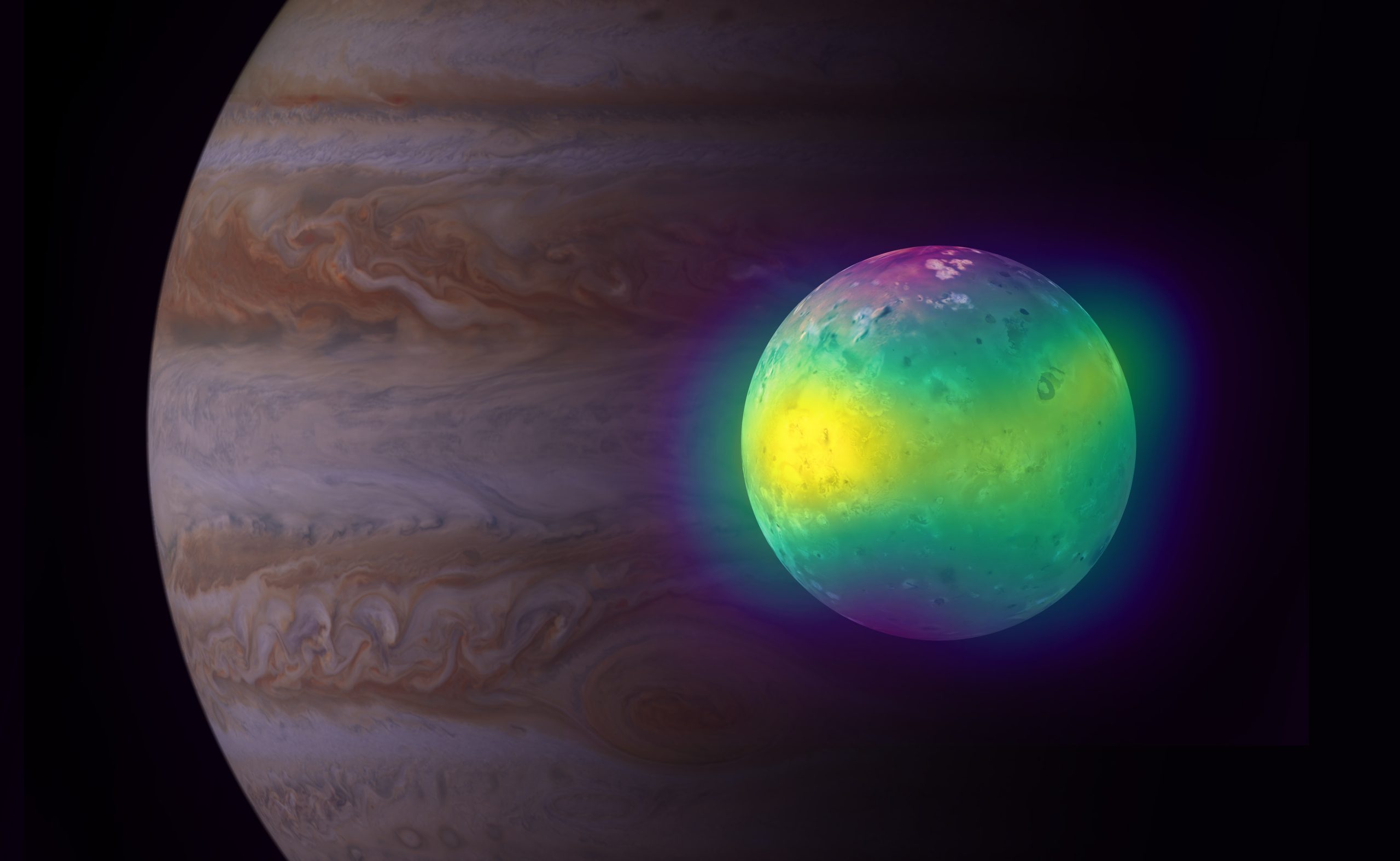Maunakea, Hawaii – Astronomers have made a breakthrough in understanding how volcanic activity directly affects the atmosphere of Jupiter’s moon Io.
In a remarkable first, new radio images from the Atacama Large Millimeter/submillimeter Array (ALMA) in Chile show plumes of sulfur dioxide (SO2) and sulfur monoxide (SO) gas spewing from Io’s volcanoes and into its atmosphere. Based on the observations, a team led by University of California, Berkeley, has calculated that active volcanoes directly produce 30% to 50% of Io’s atmosphere.
The study is published in the November 6, 2020 issue of The Planetary Science Journal.
Until now, the main source of SO2 in Io’s atmosphere was unclear.
“It was not known which process drove the dynamics in Io’s atmosphere,” said lead author Imke de Pater, a professor of the graduate school in the Departments of Astronomy and of Earth and Planetary Science at UC Berkeley. “Is it volcanic activity, or gas that sublimates (or evaporates) from the icy surface when Io is in sunlight? What we show is that, actually, volcanoes do have a large impact on the atmosphere.”
Surprisingly, the team also detected SO gas scattered across Io’s atmosphere, not just above active volcanoes. Observations from W. M. Keck Observatory on Maunakea in Hawaii suggest the widespread SO is coming from unseen volcanoes, called stealth volcanoes, which erupt under such extreme heat, material is ejected as vapors. Such plumes of pure gas are difficult to see whereas plumes from Io’s known volcanoes like Pele spew more observable material such as dust and volcanic gas that condensates.
“When we looked at the largest areas of SO emissions with Keck, we found this gas originated most likely from volcanic vents at temperatures exceeding 1500 kelvin (2240 fahrenheit) but could not be traced to any known volcanoes,” said de Pater. “This hints at stealth volcanism. Most of the SO we saw with ALMA is most likely produced when sunlight breaks the sulfur-oxygen bond in SO2.”

Io is the most volcanically active moon in our solar system, with more than 400 known volcanoes filling its landscape. Studying the volcanic activity that feeds sulfur gases into Io’s atmosphere gives astronomers a deeper understanding of its exotic interior of fire and ice.
Read more:
- “Active Volcanoes Feed Io’s Sulfurous Atmosphere,” UC Berkeley News Release (October 21, 2020)
- “ALMA Shows Volcanic Impact on Io’s Atmosphere,” NRAO News Release (October 21, 2020)
ABOUT W. M. KECK OBSERVATORY
The W. M. Keck Observatory telescopes are among the most scientifically productive on Earth. The two 10-meter optical/infrared telescopes on the summit of Maunakea on the Island of Hawaii feature a suite of advanced instruments including imagers, multi-object spectrographs, high-resolution spectrographs, integral-field spectrometers, and world-leading laser guide star adaptive optics systems. Some of the data presented herein were obtained at Keck Observatory, which is a private 501(c) 3 non-profit organization operated as a scientific partnership among the California Institute of Technology, the University of California, and the National Aeronautics and Space Administration. The Observatory was made possible by the generous financial support of the W. M. Keck Foundation. The authors wish to recognize and acknowledge the very significant cultural role and reverence that the summit of Maunakea has always had within the Native Hawaiian community. We are most fortunate to have the opportunity to conduct observations from this mountain.


